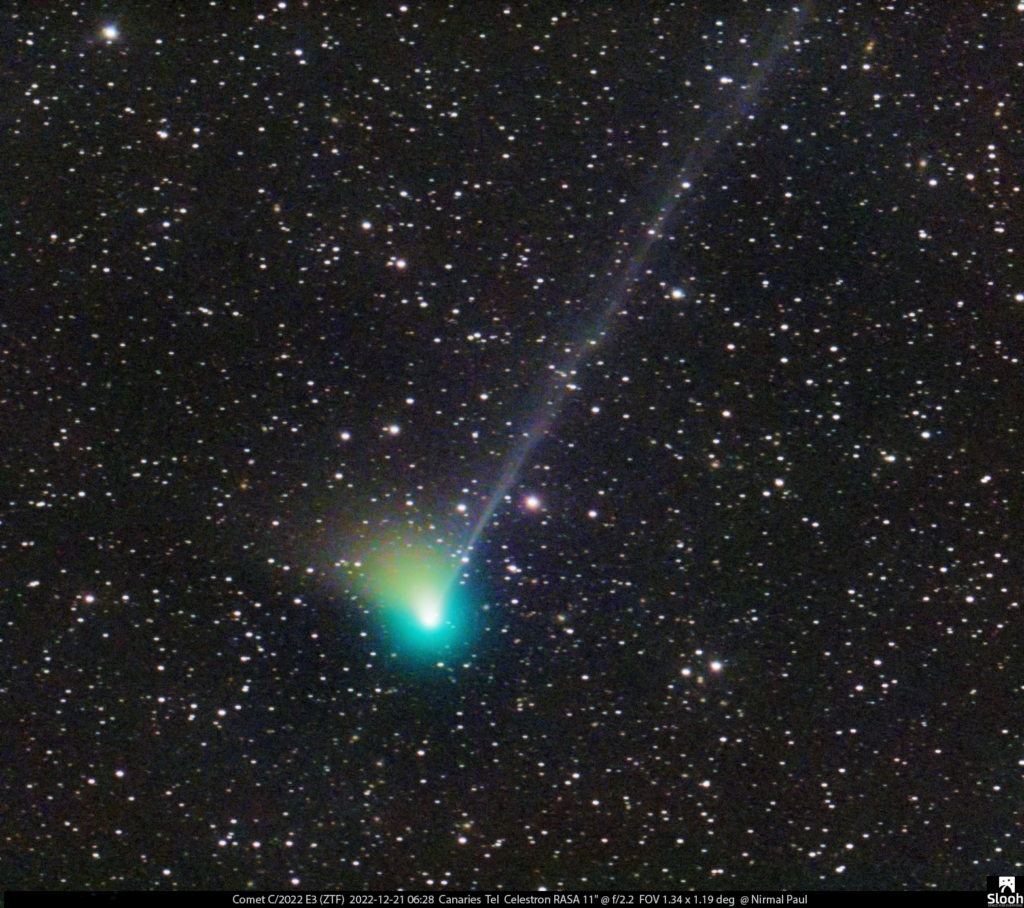Sky Report: January 2-8, 2023

Venus is slowly returning to the evening sky after a long sojourn behind the sun. It passed Mercury last week, and this winter and spring it’ll pass, in turn, Saturn (January 22), Neptune (February 14 and 15), Jupiter (March 5), Uranus (March 29 and 30), and it will almost catch Mars in late June; plus the moon will pass Venus once a month and Venus will be in conjunction with several bright stars and star clusters. All this – and more – will be in Sky Reports during the coming year.
But let’s begin with this week. Orbiting the sun on a path that’s inside earth’s, Venus (plus only Mercury) can pass between the earth and sun and Venus (and Mercury) can be on the far side of the sun (like all the planets). When it’s on the sun’s far side, it’s moving west to east and returning to view in the evening sky, gaining altitude and setting later each day. A difference between Venus and the other planets is that the earth orbits the sun at a similar speed to Venus, so we’re both going around the sun in the same direction (counterclockwise as seen from above the north pole), Venus orbiting only slightly faster, so we do a dance with the sun in the middle and Venus separates itself from the sun slowly. On January 2 Venus sets 79 minutes after the sun and two weeks later on the 16th Venus sets 98 minutes after the sun, a difference of only 19 minutes in two weeks. So Venus returns to view in evening twilight only slowly.
Look for Venus very low in the southwest about 40 minutes after sunset. Its great brilliance lets you see it, but then only if you have a low horizon. Note how slowly Venus gains altitude night by night during January.
Almost as bright but seen against a darker sky is Jupiter. Look for Jupiter halfway up the southern sky in twilight, and then lower as the hours pass. It sets at about midnight.
Roughly two-thirds of the way from Jupiter to Venus is the fainter planet Saturn, only 1/17th as bright as Jupiter, but still brighter than any nearby stars. Saturn is so low when darkness falls that our atmosphere will blur it when seen through a telescope, but Saturn will be back high in the predawn sky next summer.
Rivaling Jupiter is the third bright planet out tonight – Mars, the Red Planet (actually yellow-orange). Early in the evening Mars is at a similar altitude to Jupiter but far to the east. As Jupiter sinks in the west Mars continues to rise in the east and it’s at its highest an hour before midnight, when it’s nearly overhead. The bright moon is 5° from Mars on the evening of the 3rd. Mars is in Taurus near the orange star Aldebaran and above Orion.
A comet discovered early last year has become bright enough to see with a small telescope at around 8th magnitude. Known as Comet C/2022 E3 (ZTF), it’s presently in the constellation Corona Borealis in the morning sky. It passes closest to the sun next week and is closest to the earth and at its brightest at the end of the month when it might be a naked-eye comet from a dark location. Google “C/2022 E3” for details.
The Sky Report is presented as a public service by the Stellar Vista Observatory, a nonprofit organization based in Kanab, Utah, which provides opportunities for people to observe, appreciate, and comprehend our starry night sky. Additional information is at www.stellarvistaobservatory.org. Send questions and comments to John@StargazingAdventures.org.
Stellar Vista Observatory provides portable telescopes and tripod mounted binocular kits on loan for free to residents and visitors in Kane County. Enhance your enjoyment of the night sky! For details or to request a loan, visit https://stellarvistaobservatory.org/discover-the-night-sky/ or drop in to the Kane County Office of Tourism.






Comments are closed.